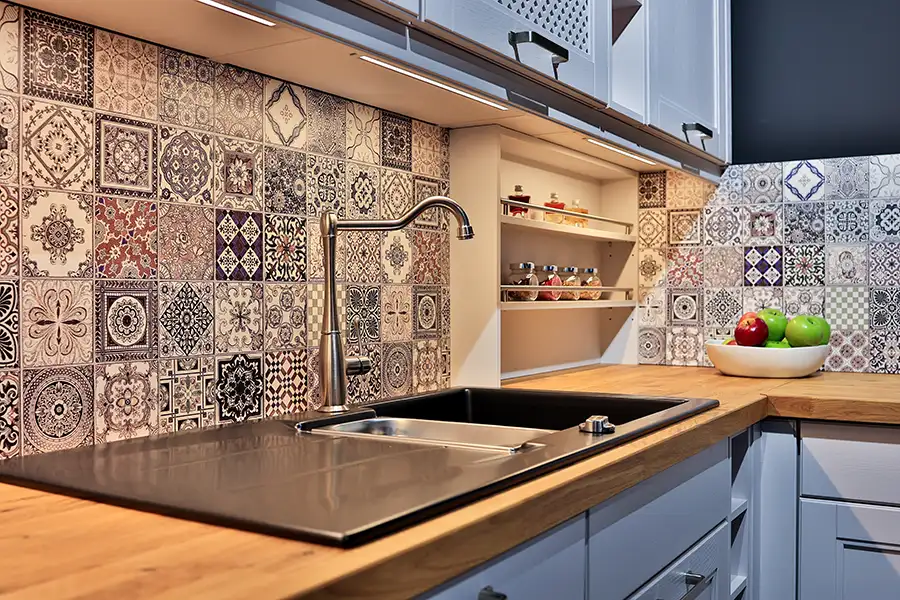Choosing the right facade and kitchen credenza
I. The kitchen facade: which material forwhat style and lifestyle?

#1. Solid wood
However, solid wood has the disadvantage of changing over time and being more susceptible to certain stains.

#2. The lacquer
Scratch and impact resistant, lacquer is sensitive to fingerprints and dust, especially if it is matte.

#3. The laminate
While it might look “cheap”, just turn to a high quality laminate and it will enhance your kitchen and create a flawless imitation. Laminate is therefore unbeatable in terms of quality/price, abrasion and impact resistance. Its counterpart, melamine, is more sensitive to heat and not recommended for a high-end kitchen.

#4. The glass
build a vintage kitchen
where antique objects and retro dishes remain in plain sight. Glass is also a sophisticated symbol par excellence, good at capturing light.
II. Two essential elements to chooseits kitchen credenza
#1. Which material to choose for akitchen credenza ?
Laminate has the elegance of being very easy to install and to clean with a sponge. The degree of customization in terms of patterns and finishes is unmatched. However, this material does not withstand as much heat as other materials and therefore will not decorate and protect the back of a gas fireplace.
Stainless steel is the ideal choice for those who want a durable, elegant and visually stunning kitchen countertop. This professional, non-porous, hygienic and wear-resistant material is available with an anti-scratch, brushed or polished finish. Stainless steel is particularly suitable for use behind a gas hob.
Stone or ceramic credenzas are high-end options that are sturdy and easy to clean. They bring a unique and luxurious character to a contemporary and chic kitchen.
Finally, don’t hesitate to take a look at the latest trends and innovations on the market. For example, you will find credenzas equipped with bars, rails or shelves to store your utensils or small condiments. Some can even be equipped with LEDs or magnets to make your life easier in the kitchen.
#2. What are the dimensions of a kitchen credenza?
Generally, the height goes from 20 to 70 cm and the width from 50 cm to 3 meters. The thickness varies from 0.5 to 1 cm.
The choice of height depends mainly on the size of your kitchen. In a kitchen of 10 m3 or less, choose a small credenza so that it does not monopolize the space. The width depends on the width of the work surface, since the objective is that the credenza does not extend beyond the work surface.
Our professionals accompany you in your project from A to Z.



